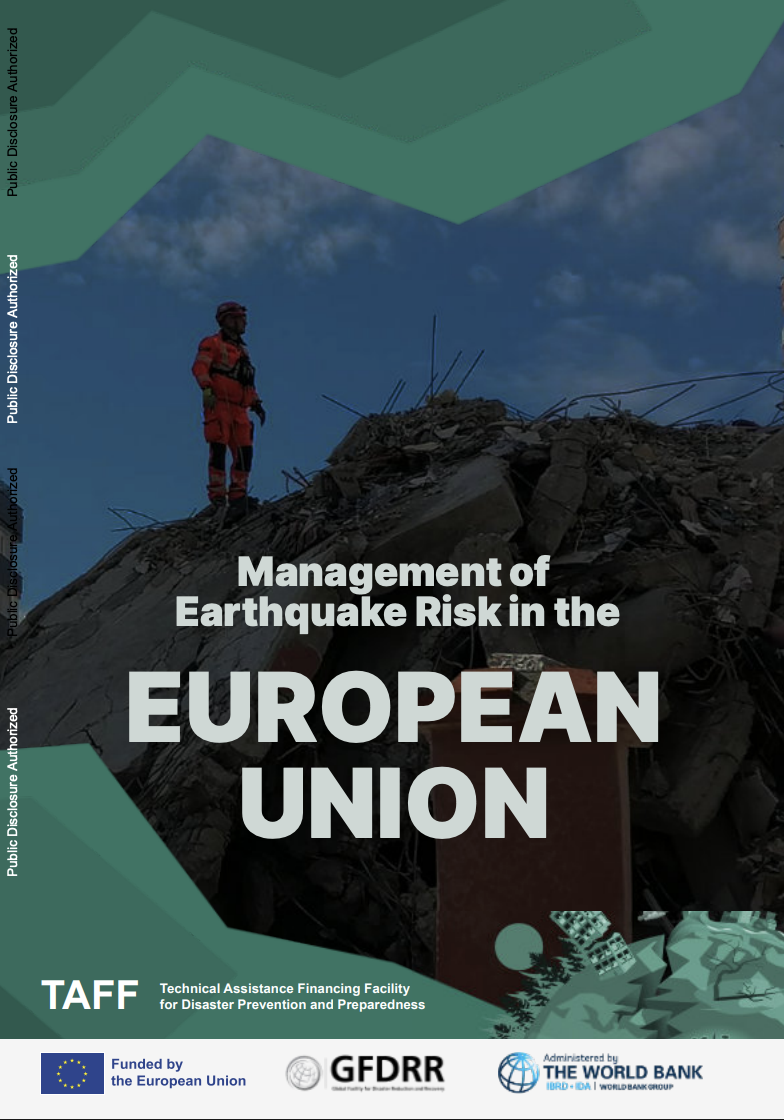Several countries in the European Union (EU) face significant earthquake risk, primarily due to seismic hazard levels and aging infrastructure. Unlike many other natural hazards, earthquakes occur without warning, limiting the ability to evacuate people and protect lives. At the same time, decades can pass between large earthquakes, leading to a decline in public awareness and policy attention to the risk. When large earthquakes do occur, they can cause significant damage and loss, often requiring several decades for the affected areas to recover. Between 2000 and 2020, earthquakes caused more than Euro 60 billion in direct damage to EU Member States, confirming their status as one of the costliest natural hazards in the region.6 All these factors make long-term planning, risk reduction, prevention, and preparedness efforts essential to reducing the impacts of earthquakes. This report summarizes the results of a rapid review of earthquake risk and risk management capacity in the EU, highlighting potential risk management priorities to inform policy dialogue and future research. The review considers capacity across multiple dimensions, including governance, understanding of earthquake risk, risk reduction and mitigation, early warning and public awareness, preparedness and emergency response, recovery and post-disaster financing, and cross-cutting topics such as social resilience and the role of the private sector. Each chapter reviews the current arrangements, key challenges, and opportunities across the EU for each of these dimensions, drawing on available information. This review aims to provide an EU-wide perspective on earthquake risk management, using EU Member States as examples but not providing an in-depth analysis of each EU Member State.

